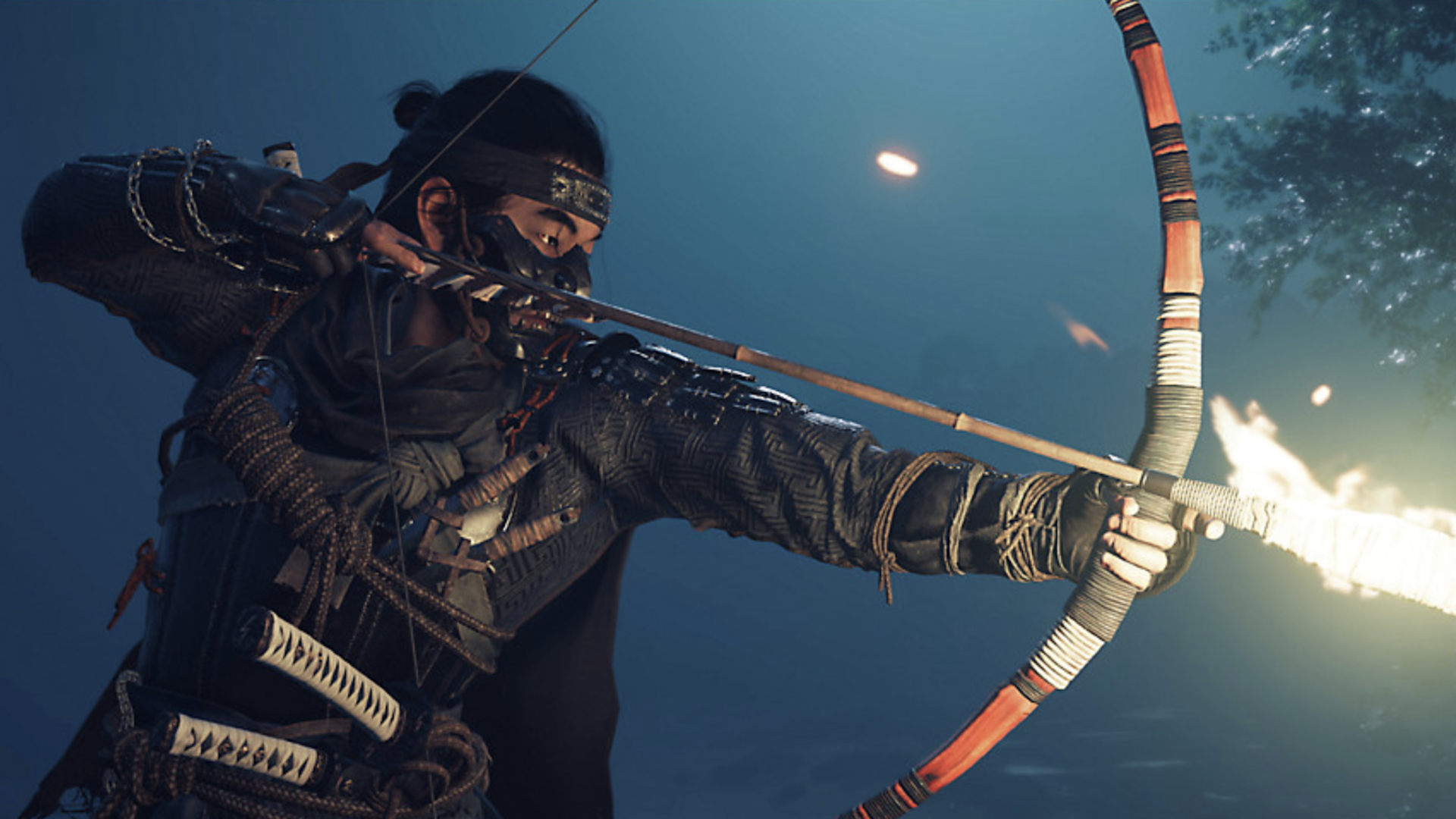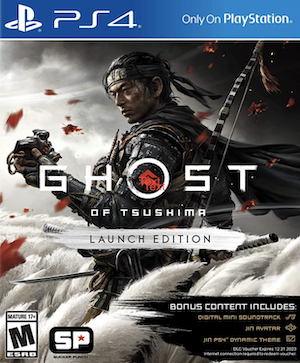
Few games from the last several years can stand toe-to-toe with Ghost of Tsushima in just about any measurable way. While it seems right at home among God of War, Horizon Zero Dawn, The Last of Us 2, and the other top-tier AAA PlayStation Studios exclusives, among its genre generally, it stands way out as a sterling example of its genre and Sucker Punch’s ability to execute a massive, ambitious game. Most of the better games of this sort don’t rely so much on innovation or reinvention, but rather lean more on their ability to combine common ideas that already exist in such a well-executed way that the derivative nature of them stays mostly hidden behind the glossy exterior of the game’s polish and engrossing story. Ghost of Tsushima isn’t very different in that regard, but it does manage to pepper in just enough of its own ideas and fundamental twists on the third-person action adventure format that it soared to the top of many players’ lists of best games of 2020. Had the field not been so crowded by other behemoths like The Last of Us 2, Ghost probably would have emerged as an undisputed game of the year. Regardless of its competition through, or the timing of its release, Sucker Punch’s Sengoku-era epic exceeded expectations and raised the bar for its genre in a variety of ways.
There’s a lot of factors that determine how good or bad a massive, open-world action adventure game is or isn’t. Gameplay, story, audio and video quality, and other things can make or break a game of this sort, and thankfully Ghost goes out of it’s way to impress in nearly every category. Most noticeably at first in the graphics on display. Ghost of Tsushima has virtually no weak spot in its visual presentation, but beyond that actually knocks it out of the park in multiple areas here. The sunsets, the meticulously accurate architecture, the colorful flora and fauna that change in color palette in different areas of the island, the intriguing hidden caves, shores, and vistas that beckon continuous exploration, and of course the highly detailed characters themselves, rarely fail to impress. This game manages the negotiation between detail and quantity like virtually nothing before it, and the result, it ends up being a game that is just as dense with sharp details as it is immense with a colossal amount of space that lures you in from all directions.
All of this is noticeably intensified with the masterfully handled HDR effects that don’t distract with overly vivid colors, but do intensify the mood of the game’s many dazzling locations. From the big picture to the smaller stuff, like subtle particle effects from explosions of Jin’s more advanced weaponry or Mongol gunpowder barrels serve as a nice cherry on top of the visuals in Ghost. But it’s so full of other little touches it’s hard to zero in on any one thing that really stands out. Even more impressive is the outstanding motion capture performances of the actors that capture everything from the subtle movements of characters’ faces to the large, more demanding movements of the various characters’ combat stances that all flow together seamlessly. Highly articulate mo-cap performances seem to be a major hallmark of the PlayStation Studios family these days, and Ghost of Tsushima handily keeps up with the best of them, particularly in the pre-rendered cinematics. The visual package in this game is outstanding by all reasonable measures. Just a few stiff NPC animations away from true perfection.
Despite how important visuals are in these sorts of games, gameplay is still the most important thing, and Ghost does a great job with its mechanics. Like all other games in the genre, there are a lot of systems at play in the game. From Jin’s various skill trees for each stance, his personal skill tree, charms that buff various aspects of Jin’s abilities to the different armor types that can give Jin an edge with detectability, health, and Jin’s ability to find various artifacts, the game certainly gives you a lot to manage if you want – arguably more than God of War, Horizon, and the rest of its contemporaries. Managing Jin’s resolve, learning his special moves, and mastering the one-on-one standoffs provide even more variety and depth. Just as importantly, though, a lot of that depth is optional. While sticking with one stance, and one armor set and one strategy throughout the game would be robbing yourself of the game’s many different fascinating ways to play it, you could theoretically do it if you level up your equipment accordingly. While the water stance is certainly more effective against sheildmen, you could just as well have upgraded your arsenal of explosive arrows and black powder bombs to plow through whoever you want, or focus entirely on stealth and sail through most of the game as a silent assassin who doesn’t need much more than patience and wind chimes.
The downside of Jin having access to so many things at once, is a fairly convoluted menu system that sometimes feels less than optimal in terms of how it’s organized. Instead of one or two big weapon wheels that contain everything, Ghost has multiple, smaller menus that result in a system that takes a while longer to get used to than I would have preferred, but that’s a very small bump in the road in light of how fun and engaging using those various tools are. The game gives you a lot to do outside of the main story. Following animals to various points of interest, including the hot springs that encourage a rare moment of calm and reflection in video games. Regardless of your goal, Ghost’s navigation system is perhaps the most charming twist on the formula, as it simply lets the wind guide Jin to his next destination, which both makes sense contextually for the samurai movie-aesthetic of the game, while simultaneously avoiding cluttering the UI with compasses and objective markers. As you would expect in a somewhat more grounded take on samurai, the combat is not the arcadey hack ‘n slash that you might find in other games. Mashing buttons won’t get you very far, as countering multiple foes at once while landing hits of your own is a delicate dance that doesn’t overstep with its difficulty, but does feel noticeably more technical than the Batman: Arkham combat system, to which it is often compared.
The story of Ghost of Tsushima is probably the final of the three big things it gets the most right. The main beats of the first, second, and third act are perhaps a bit on the predictable side – even more so to the Kurosawa fans that the story is most precisely aimed at – but the meat of the story and interpersonal relationships between the larger macro points are where the narrative truly shines. Jin meets new friends and reconnects with old ones, and the way these characters’ agendas intermingle is rarely anything short of completely entertaining. The thief Yuna and the jaded Ishikawa stood out most to me, but there’s really no weak character among the main cast, and the story truly wouldn’t be the same without any one of them.
Ghost of Tsushima is one of those rare games that rely on execution over innovation, but don’t suffer from that decision at all, due to its handful of thoughtful twists to the formula that make it feel much more like a step forward than it otherwise would have. The outstanding gameplay, deep combat, and magnetizing story make it’s few rough edges virtually invisible, so while an open-world samurai story might not quite be for everyone, clearly, Ghost of Tsushima is still one hell of a game.
Note: The views expressed in this article are those of the author and do not necessarily represent the views of, and should not be attributed to, GamingBolt as an organization.
















